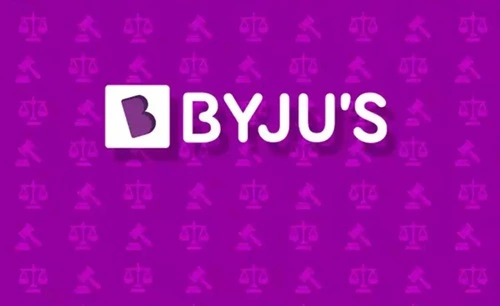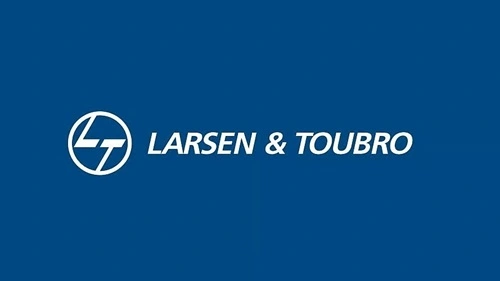BYJU’S, founded in 2011 by Byju Raveendran, has become a global leader in educational technology, often hailed as India’s largest EdTech company. Known for its interactive learning app, BYJU’S has transformed the way Indian students approach education, making digital learning a norm rather than an exception. With a valuation that has soared over the past few years and a strong portfolio of acquisitions like WhiteHat Jr., Aakash Educational Services, and Great Learning, BYJU’S has expanded its reach beyond India and into international markets. However, in the face of increasing competition, economic headwinds, and questions over profitability, BYJU’S faces a mix of opportunities and challenges. This SWOT (Strengths, Weaknesses, Opportunities, Threats) analysis explores BYJU’S current market position and future outlook.

Strengths
1. Strong Brand Equity and Market Leadership:
BYJU’S is one of the most recognized and trusted EdTech brands in India, enjoying high brand recall and association with quality learning. Its robust marketing strategies, including endorsements by Bollywood actors and sports icons, have reinforced its brand image. BYJU’S has also established itself as a market leader in the Indian EdTech sector, with a significant share in K-12 education, competitive exam preparation, and upskilling courses.
2. Diverse Product Portfolio and Target Segments:
BYJU’S caters to a broad spectrum of learners, from young school-going children to competitive exam aspirants and adult learners seeking professional certifications. The acquisition of Aakash Educational Services has strengthened its offline presence in the test-prep market, while Great Learning has expanded its footprint in upskilling and higher education. This diverse portfolio reduces BYJU’S reliance on any single segment and allows it to capture multiple demographics.
3. Strong Financial Backing and Investor Support:
BYJU’S has attracted substantial investments from global venture capital firms and strategic investors, including Sequoia Capital, Tencent, and General Atlantic. These investments have allowed BYJU’S to scale rapidly, invest in technology, and expand internationally. Strong investor backing gives BYJU’S a financial cushion to manage operational expenses, pursue acquisitions, and sustain its growth momentum, even amid challenging market conditions.
4. Innovative Technology-Driven Learning Experience:
BYJU’S leverages artificial intelligence (AI), machine learning (ML), and data analytics to provide a personalized learning experience. The app tracks student progress, adapts content to individual learning needs, and uses engaging visuals and interactive elements to make learning enjoyable. BYJU’S tech-enabled approach has redefined learning for millions of students, especially in India’s urban areas, where digital adoption is high.
Weaknesses
1. Heavy Cash Burn and Profitability Challenges:
Despite its rapid growth, BYJU’S operates in a highly capital-intensive business model that relies heavily on aggressive marketing, sales, and content creation. The company’s high cash burn rate, driven by its ambitious expansion plans, acquisitions, and advertising costs, has raised questions over its profitability. Investors and market analysts have expressed concerns about BYJU’S ability to achieve sustainable profits in the long term.
2. Dependence on Subscription-Based Revenue:
BYJU’S revenue model is largely subscription-based, with most of its income generated from selling annual or multi-year subscription packages to students. While this model provides recurring revenue, it also poses challenges related to customer retention, as students may discontinue services after completing their course or exam preparation. BYJU’S needs to innovate to ensure a steady stream of long-term users, especially in competitive exam prep and upskilling segments.
3. Quality and Standardization Issues Across Acquisitions:
BYJU’S aggressive acquisition strategy has allowed it to diversify quickly, but integrating these diverse acquisitions has proven challenging. Ensuring consistent quality, aligning brands under a unified standard, and managing disparate teams have been ongoing issues. For example, WhiteHat Jr. has faced criticism for its high-pressure sales tactics and quality concerns, impacting BYJU’S reputation. Streamlining these businesses while maintaining a high standard of quality is critical for BYJU’S brand image.
4. High Customer Acquisition Costs:
BYJU’S spends heavily on marketing, celebrity endorsements, and sales promotions to acquire new users, which significantly increases its customer acquisition costs (CAC). This high CAC could become a financial burden, particularly if growth rates slow or competitors offer similar services at lower costs. Reducing dependence on expensive marketing channels and enhancing organic growth strategies are essential for BYJU’S to achieve a balanced cost structure.
Opportunities
1. Expansion into International Markets:
BYJU’S has already begun its international expansion with forays into the US, UK, Middle East, and Southeast Asia. By adapting its curriculum to local education standards and introducing localized content, BYJU’S can capture demand in these regions, where digital learning is gaining traction. Expanding into new geographies not only diversifies revenue streams but also allows BYJU’S to leverage its brand on a global scale, reducing reliance on the Indian market.
2. Growth in Demand for Online and Hybrid Education Models:
The COVID-19 pandemic accelerated the shift toward online education, and many parents and students now see digital learning as a viable, complementary option to traditional schooling. As schools and universities adopt hybrid models, BYJU’S can position itself as an essential partner in providing supplementary online education resources. This trend represents an ongoing opportunity for BYJU’S to strengthen its product offerings in blended learning.
3. Upskilling and Professional Learning Market:
With rapid changes in job requirements and skill gaps, there is growing demand for upskilling and reskilling programs for professionals. Through its acquisition of Great Learning and partnerships with universities, BYJU’S can expand its presence in this lucrative segment, providing courses in data science, AI, management, and other high-demand skills. Upskilling programs cater to working adults, offering BYJU’S a steady revenue stream beyond traditional K-12 and test-prep markets.
4. Partnerships with Schools and Government Initiatives:
BYJU’S has the opportunity to collaborate with schools, educational institutions, and government bodies to enhance digital learning across India. Partnering with government initiatives focused on improving education accessibility can allow BYJU’S to reach underserved areas and rural regions. Collaborations with schools to integrate BYJU’S content into classrooms can help the brand establish a long-term presence in the education system, further strengthening its market position.
Threats
1. Intense Competition from Domestic and International EdTech Players:
The EdTech market in India and globally is highly competitive, with players like Unacademy, Vedantu, Khan Academy, and Coursera vying for market share. These competitors offer similar learning experiences and have also expanded into test prep, K-12, and upskilling, often at competitive prices. Additionally, international giants like Google and Amazon are making inroads into online education, intensifying competition. This competition requires BYJU’S to continuously innovate and defend its market share.
2. Regulatory and Compliance Challenges:
India’s EdTech sector is under increased regulatory scrutiny, with calls for tighter regulations on advertising, pricing, and data privacy. Misleading advertisements, aggressive sales tactics, and lack of transparency in terms of service have led to criticism of EdTech companies, including BYJU’S. Any regulatory changes could impact BYJU’S business operations, marketing strategies, and profitability, especially if restrictions on sales practices and advertising come into effect.
3. Potential Backlash Over High-Pressure Sales Tactics:
BYJU’S has faced criticism for its high-pressure sales tactics and aggressive marketing, particularly through its subsidiary WhiteHat Jr. This backlash has led to reputational risks and public perception challenges, as parents and educational experts raise concerns over aggressive selling methods. Addressing these concerns through transparent and ethical marketing practices will be crucial to maintain trust and retain customers in the long term.
4. Economic Slowdowns Impacting Household Spending:
As BYJU’S primarily targets students and parents, its business is sensitive to economic cycles and household spending patterns. In economic downturns or periods of uncertainty, families may cut discretionary spending, including on education technology. This trend could impact BYJU’S subscription renewals and new user acquisition, particularly if the company fails to maintain affordability amid economic challenges.
Future Outlook
BYJU’S future outlook remains promising, with growth opportunities in international markets, hybrid education, and professional learning. As digital learning becomes increasingly mainstream, BYJU’S has a solid foundation to expand its services and capture demand from students, professionals, and educational institutions. By leveraging its diverse portfolio and expanding into new regions, BYJU’S can strengthen its position as a global EdTech player and reduce its dependence on the Indian market.
The company’s efforts to enter the upskilling and professional certification market, driven by its acquisition of Great Learning, align well with the growing demand for adult learning and career-focused education. The focus on professional learning could provide BYJU’S with a steady revenue stream beyond K-12 education, diversifying its offerings and catering to a broader audience.
However, to sustain long-term growth, BYJU’S must address profitability challenges and high operational costs. Reducing its dependency on aggressive marketing, implementing cost-control measures, and optimizing customer acquisition strategies will be essential to achieve financial stability. Enhancing customer retention and exploring lower-cost subscription options can also help BYJU’S retain customers in an increasingly competitive landscape.
The regulatory environment will be another critical area to monitor, as increased scrutiny of EdTech practices could lead to operational and compliance challenges. Proactively addressing concerns around transparency, sales practices, and data privacy will help BYJU’S maintain a positive public image and avoid potential regulatory hurdles.
In conclusion, BYJU’S strengths in brand equity, financial backing, and technology-driven learning give it a significant advantage in the EdTech sector. By capitalizing on opportunities in international markets, hybrid learning models, and professional upskilling, BYJU’S can continue its growth journey and adapt to evolving educational trends. With a balanced approach to innovation, cost management, and ethical practices, BYJU’S is well-positioned to navigate challenges and strengthen its leadership in the global EdTech landscape.

